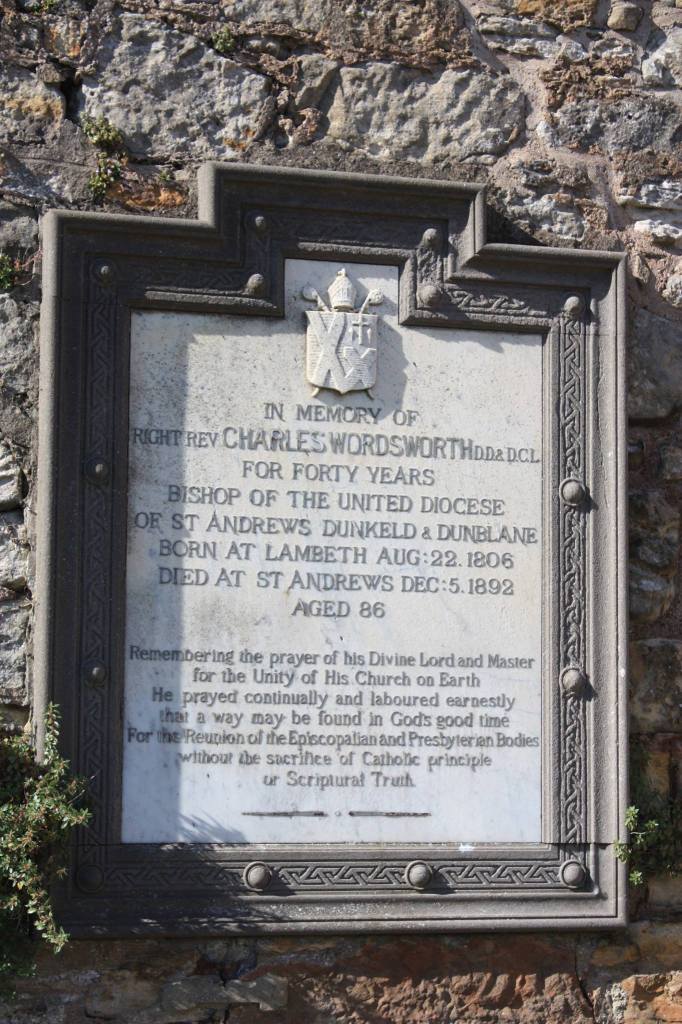Like many of us, I love wandering around in old graveyards, a natural place for quiet contemplation and thoughtful reflection. While on a lunchtime stroll in the graveyard around St Andrews cathedral, I was moved by the gravestone of the Victorian bishop Charles Wordsworth, whose zeal for Christian unity, a cause very close to my own heart, was expressed so well in his epitaph:

These words and sentiments from the late nineteenth century were engraved at a time when church attendance was very high all across Scotland, with thriving parishes of the Church of Scotland everywhere, with those of others, like Bishop Wordsworth’s own Scottish Episcopal Church, also ministering to large flocks.
Times have changed, and the Scottish Kirk, here in the East Neck of Fife as in many other places, is now contemplating the closure of a vast number of churches, including some beautiful historic buildings that have stood at the heart of their communities for centuries. The decline of active members, decrease of clergy vocations, and the cost of maintaining old buildings, all factor in. I have to admit at times this reality gives rise to a vast melancholy in my heart.
In PIttenweem, our neighbouring village, stands a centuries-old parish church which is due for closure in the near future, on the site of what had been a medieval abbey:

PIttenweem, Parish church.
Just across the kirkyard from it is the much smaller but very lovely Episcopal church, which even has one of its walls border on the same kirkyard:

St John Scottish Episcopal church.
The symbolism of these two churches, both of them on the grounds of the same medieval abbey, and sharing but separated by a kirkyard, seems to speak for itself, a symbol of the long-divided post-reformation church in Scotland. But now, in the changed circumstances of our own day, it also presents opportunity. The growing closeness of various Christian churches in Scotland, along with declining numbers, accelerates the need to overcome old divisions and find creative ways to share buildings; such sharing can allow pooling of resources, and perhaps even lead toward the breaking down of old barriers and prejudices and new fellowships. And, just perhaps, help people realise that “God’s good time” for unity may indeed be upon us….


